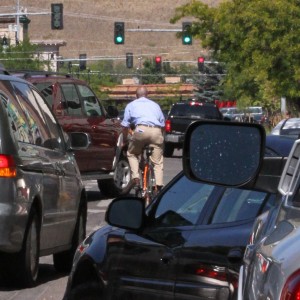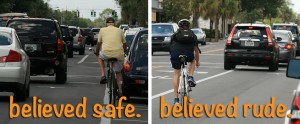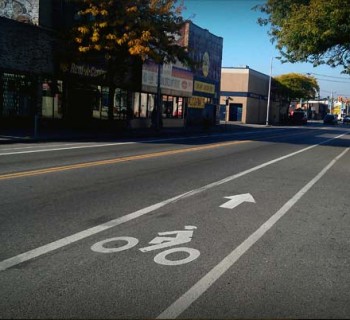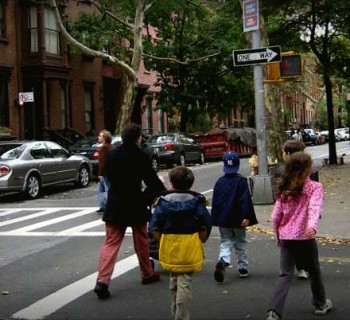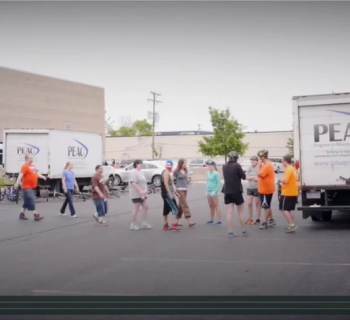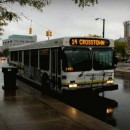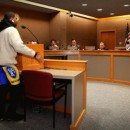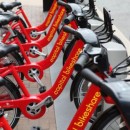Source: Keri Caffery
Editor's Note: This article first appeared on IAmTraffic.org. It has been edited by Mode Shift and is reposted with permission.
Anyone who has spent any time on bike blogs, forums and comment sections has encountered many, many “motorists are idiots” stories. These are predominantly stories of the unsuccessful bicyclist practicing edge or pedestrian behavior.
He gets buzzed and cut off frequently. He wants new laws requiring motorists to move over, or yield to him when he's passing on their right. He loves PSA campaigns that tell motorists to look for bicyclists, but it hasn't occurred to him that there are things he can do better. He's riding the way he believes he is expected to. Good thing he's tough. Bicycling on the edge of the road is only for the fearless, fast and thick-skinned warrior.
Under the bravado is a disempowered, unsuccessful road user who needs other people to change so bicycling can be less frustrating. Most of us know this guy, or we've been him. He has been the face of American bicycling for decades.
If he never learns there's a better way, he gives up and goes back to driving a car.
The Stories of the Unsuccessful Bicyclist
I’m a second class citizen.
I’m at the mercy of others.
Most motorists are careless and mean.
Bicycling is difficult and frustrating and won’t be safe until other people change and we have special facilities.
The majority of American bicyclists are locked into this cycle of conflict and frustration. In fact, the beliefs of our culture are designed to hold them there.
Throughout history, dominant cultures have held their norms in place with stories, symbols and ideas designed to discourage deviation. This is called control mythology. It is insidiously woven into the culture so that it is not recognized as anything other than “the way it is and always has been”—an unchangeable fact of life. It is the underpinning of beliefs, customs and laws. It is the root cause of many intractable problems throughout the world. Tragically, it is often held in place most strongly by the subordinates it is intended to suppress.
The plight of the unsuccessful bicyclist is the product of the control mythology by which motordom, and its culture of speed, came to dominate our public roadways. Our current beliefs about the road date back only to the 1920s.
As the motorcar entered our cities, it quickly ran up against the dominant pedestrian culture—a culture that had believed for thousands of years that streets were for people. The speed of the motorcar was incompatible with that culture's customary use of the streets for socializing, commerce and movement of people and goods by human and animal power. The resulting clash—and death count—threatened to curtail the usefulness of the motorcar. So began adeliberate effort by a wealthy minority of motoring interests to reframe the purpose and preferred users of our streets.
The Great Reframing resulted in the creation of a control mythology designed to clear the roads of anything that slows motorized traffic.
To control by fear, it changed the perception of cars from vehicles being driven by people who are responsible for safe and competent operation into traffic—a faceless force of nature which must be avoided. That alone has had repercussions for safety, civility and justice for all road users.
The reframing dissociated higher speed from greater responsibility, foisting upon us the utterly false belief that it is dangerous to be slow. But fear alone isn't enough. Being slow and in the way is also socially unacceptable. Thus, if you shake off the imposed irrational fear, your peers will try to keep you in your place.
We Shall Overcome
Understanding these beliefs is essential to the task of encouraging bicycling in America. These beliefs are the root cause of why bicycling seems difficult, dangerous or impossible to most people. These beliefs have inhibited bicycling for decades.
These beliefs are a false construct that can be overcome by individual bicyclists. Even with all the imperfection of motorist behavior, the physical issues of land use, street design and other ills of our culture's diversion into motor-centric transportation priorities, the individual can be empowered to thrive as a human-powered vehicle driver… right now. Not just the strong, brave, fearless….whatever. Anyone.
The green-shirted bicycle driver in the illustration at the top of the page is not unique by any physical characteristic, age or gender. That bicyclist is simply someone who has learned the same defensive driving skills taught to the drivers of another common narrow vehicle: the motorcycle.
What's less simple is that she had to overcome the baggage of the control mythology before she could learn the behaviors that allow her to have a successful and conflict-free experience. A future post in this series will discuss strategies for belief change.
The reward for the bicyclist is tremendous: empowerment for unlimited travel. But the reward for those of us wanting to encourage bicycling is also significant. This bicyclist tells stories, too. She tells stories about all the places she goes on her bike, how much better she feels when she arrives at a destination, how easy and rewarding it is to use a bike for transportation and how courteous her fellow road users are.
She's positively connected to her community. Her enthusiasm is infectious. It inspires her friends to dust off their bikes and try a trip to the park or the store, too. If they implement her style of riding, they, too, will be empowered by success. New positive stories will begin to edge out the old negative ones.
The Stories of the Successful Bicyclist
I’m a first class citizen.
I’m in control of my safety.
Most motorists are safe and courteous.
Bicycling is safe, easy and a great way to connect with the community.
I don't need special infrastructure, but there are some ways better infrastructure could enhance my travels.



